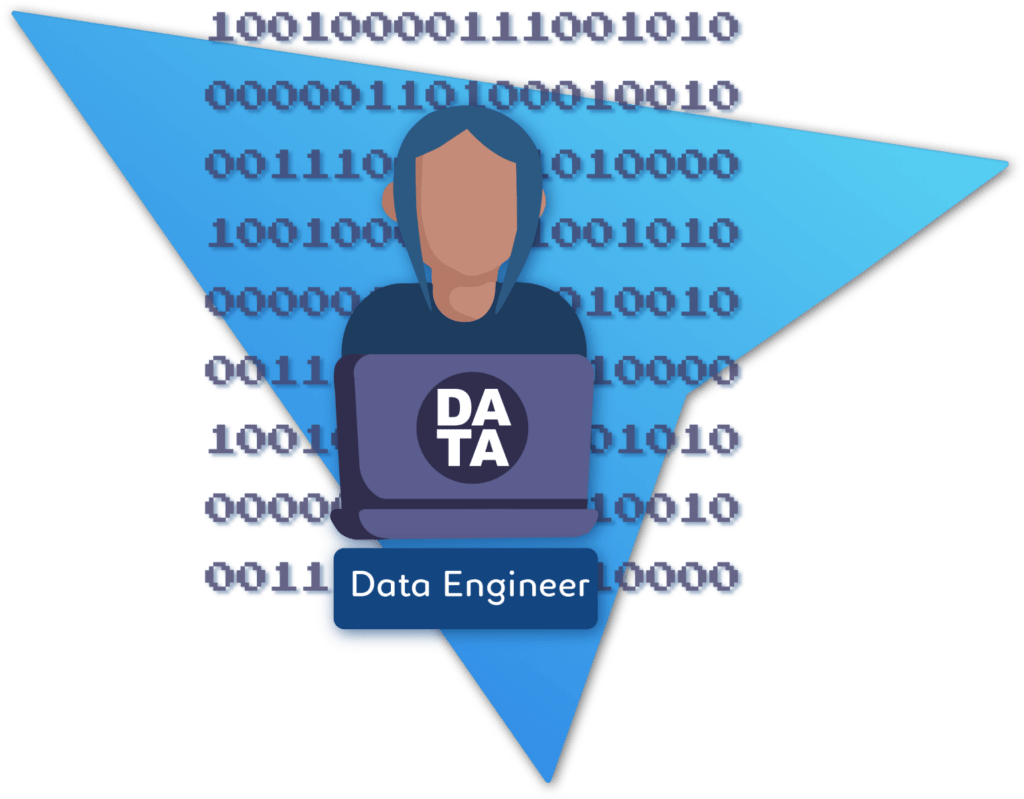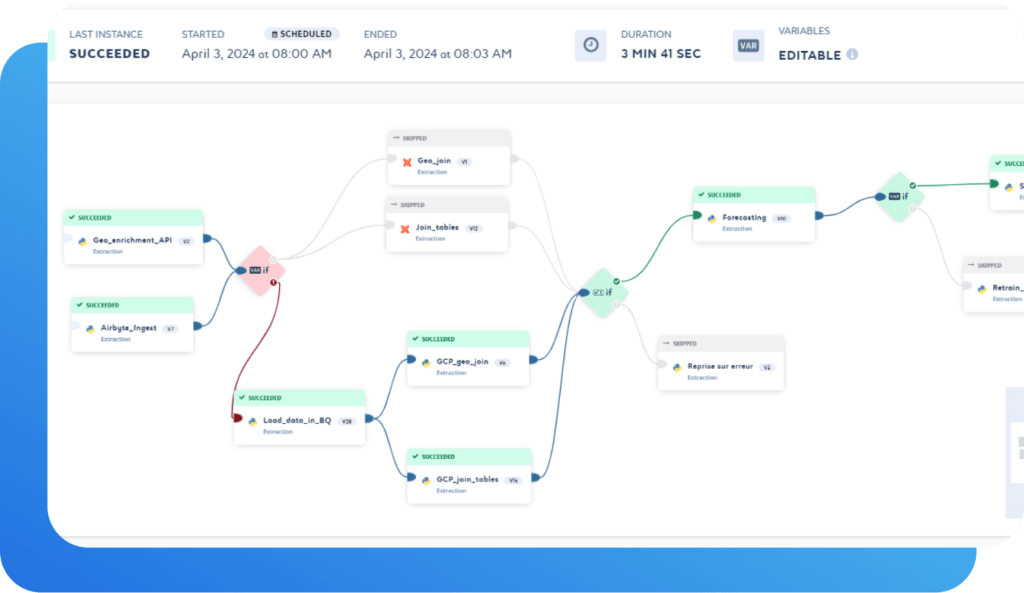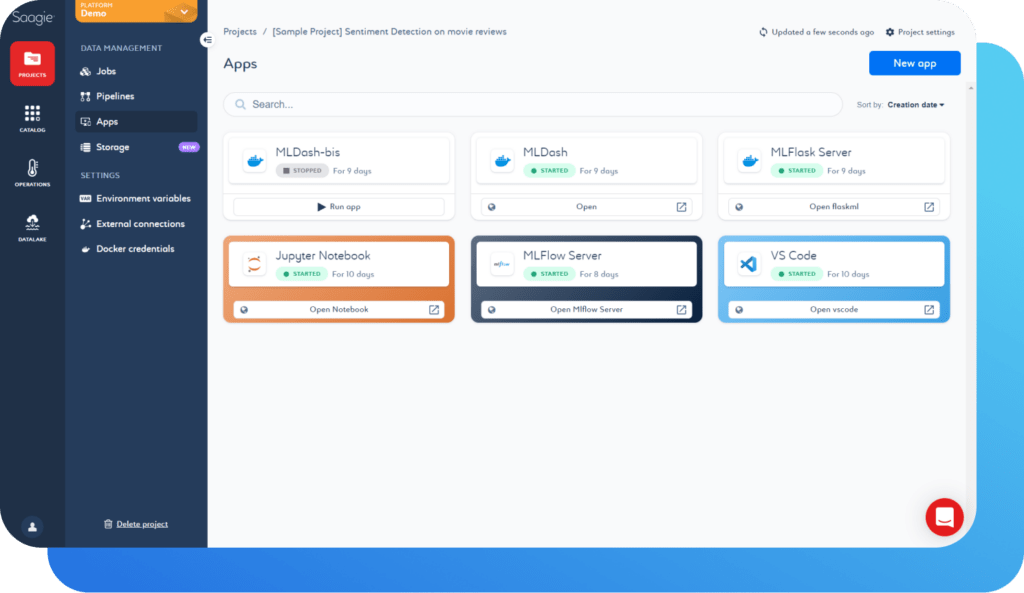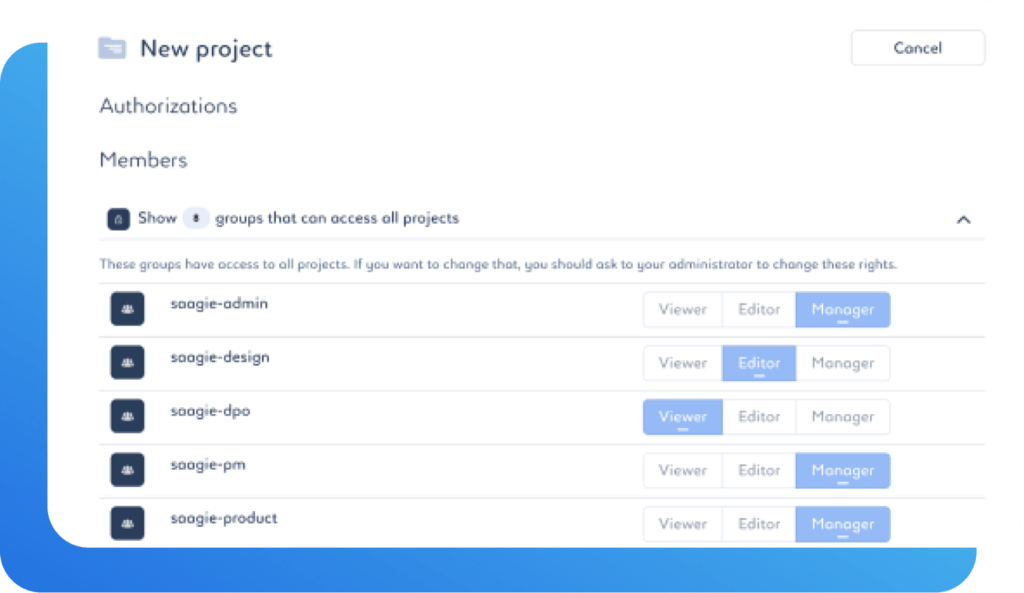Data Engineer : Maîtrisez l'orchestration avec Saagie
Data Engineer : Maîtrisez l'orchestration avec Saagie
En tant que Data Engineer, vous êtes au cœur
de l'action, façonnant le paysage des données.
Saagie vous offre une plateforme complète centrée sur l'orchestration
pour libérer tout le potentiel de vos projets data et IA.



Data Orchestrations simplifiées
Notre plateforme offre une interface intuitive et collaborative, vous permettant de créer, gérer et déployer des workflows en toute simplicité.
Saagie excelle dans l’orchestration de jobs et de pipelines avancés, multibranches et multitechnologiques, offrant une solution complète pour répondre à vos besoins en matière de traitement des données.

Technologies et SDK
Avec Saagie, bénéficiez d’une flexibilité maximale grâce à notre écosystème technologique prêt à l’emploi, riche et varié, comprenant plus de 50 technologies cloud, open source et commerciales telles que Python, R ou Bash.
Intégrez facilement des technologies personnalisées grâce au Saagie SDK, élargissant ainsi votre boîte à outils d’orchestration.


Des projets sécurisés
Profitez également de notre approche sécurisée et collaborative par projets, permettant de développer et de créer en toute sécurité sans risque de perturber d’autres projets.
Nos fonctionnalités avancées vous permettent de planifier, automatiser, alerter et versionner chaque job et pipeline en toute simplicité.
Gardez un contrôle total, itérez et développez simplement sans contraintes.




